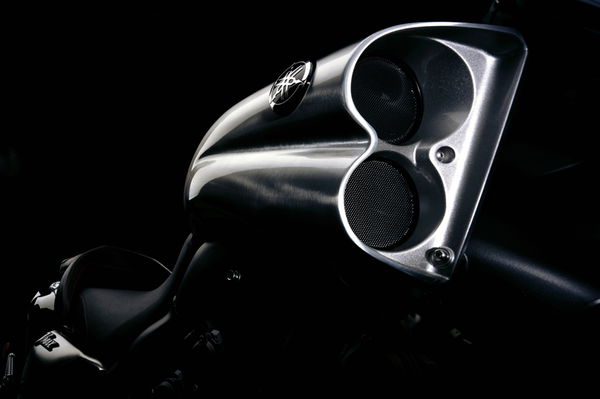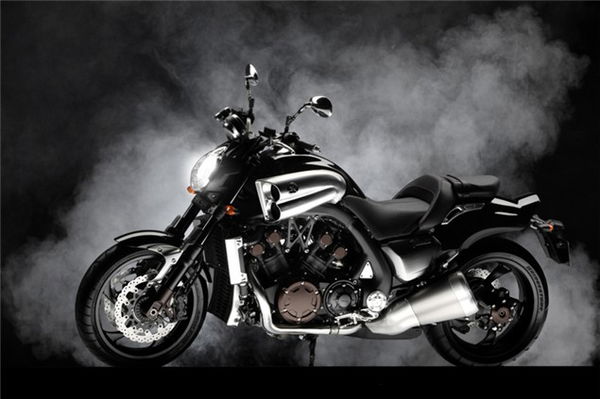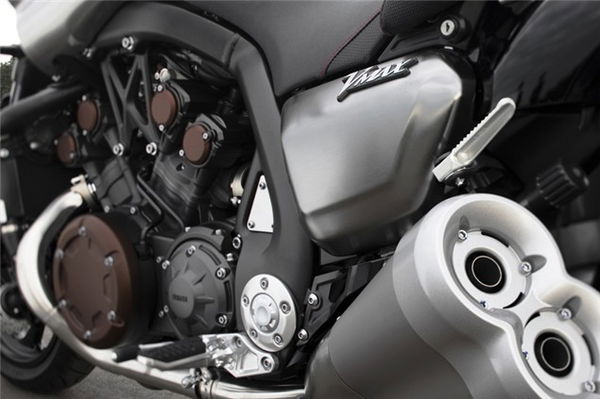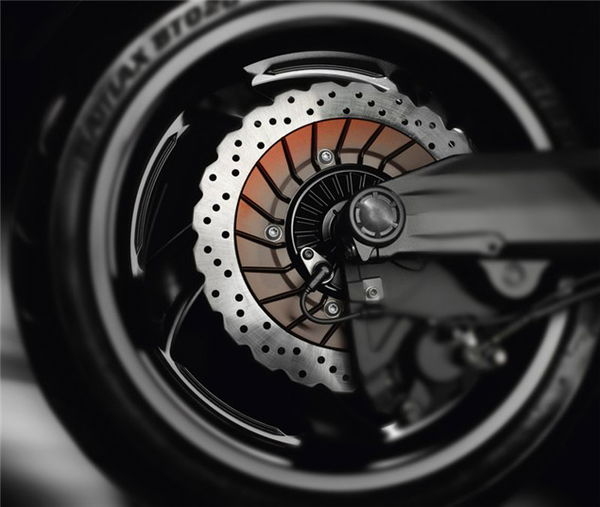Return of the Yamaha Vmax
It’s been 12 years in the planning, makes over 197bhp and will set you back nearly £16,000. Welcome back Vmax, you have some big boots to fill


Ever since Yamaha unveiled a prototype V4-engiend bike at the Tokyo motorshow in 2005 the hype around the new Vmax has been building. There was little doubt it was on its way, Yamaha even gauged public reaction with two websites, one called nextvmax.com, and by the time a ‘concept’ bike was shown at various shows, including last year’s NEC, public expectation was high. But still Yamaha refused, publicly anyway, to admit the bike existed. Now the new Vmax has broken cover, is it worth the wait?
At the bike’s world revealing we caught up with its designers to get the full inside line on the technology behind the Vmax, how it went from concept to reality, what it means to Yamaha and why it took so long.
“It’s hard to believe but we first started work on this new bike in 1996,” remembers Jean Claude Olivier, director of Yamaha Motor France. “That is not to say that the bike you see today was designed in 1996, but we knew we had to create another Vmax, but we did not want to rush to produce a new model, it had to be perfect. We wanted to make 200bhp but we also wanted to make a bike that would pass the Euro III emissions, and this is hard. So, after years of development we are finally happy that this new Vmax can carry on the great Vmax tradition!”
So why did it take them so long? First of all you have to understand what the brand Vmax means to Yamaha. Having stayed relatively unchanged over its 23-year production life the old bike established a very strong image over the whole world. As well as selling over 100,000 bikes the Vmax has appeared in the Guggenheim Museum and spawned fan clubs in every corner of the globe. Over the years the name Vmax has evolved into much more than just a cruiser, it’s a strong brand in its own right with a very definite image associated with it and cult status. Tarnish this reputation with a model that doesn’t hit the mark bang on and you’ll never recover it, which is why the new Vmax’s designers made sure they encapsulated all the old bike’s feeling in the new one, whilst at the same time improving on the old bike’s flaws.
“The Vmax is a legend. We had to produce a new bike using the latest technology, but without losing the heart of the original. The one thing you notice about this bike compared to the original is the way the bike handles in the curves and also how it stops,” confirms Oliver. Which is a marketing man’s way of saying the old one handled like a shopping trolley, but had a legendary engine.
With its V-Boost system and 145bhp the Vmax’s engine was mind-blowing back in the 1980s. It was this monster power-plant that dominated the bike and is why Yamaha refer to it as the Vmax’s heart. To get the chassis to handle didn’t prove too much of a problem to the bike’s designers, what caused them the most headaches was the motor.
Vmax Facts
- Yamaha has sold 100,000 Vmaxs since 1985
- The original bike was included in a display in the Guggenheim Museum
- Work started on the new Vmax in 1996
- The new Vmax makes 197bhp!
- Only 2,000 Vmaxs will be made each year, of which the UK will only get 100
- It is limited to a top speed of 137.5mph
- The French bike will be limited to 100bhp. Ha!
- The new Vmax will be in dealers in November
Although the new V4 motor shares no component parts with the old bike its designers knew that it had to feel the same and produce the same sound and sensations. The online surveys told them that customers loved the sensation of the V4 engine, the feeling of power and its unique characteristics. So they knew what it had to feel like, but refused to use the old motor as a basis. This was a Vmax for the next few decades, not one to look back at the past.
“The Vmax sensation is all about power and acceleration, not only the power but also the character of the engine, something you could only get from a V4. We had to get this sense of feeling into the new motor,” one of its designers confirmed.
As anyone who has ridden an old Vmax will tell you a big part of this sensation is the V-Boost, a unique system that creates a kind of power band in the engine. The engineers were tasked with creating a modern equivalent of this, so they turned to Yamaha’s YCCI, which varies the height of the intake trumpets in the airbox and can be found on the latest R1, to replace V-Boost. So they had the feeling in the engine, the next problem was how much power to give it.
Online survey responses showed that owners wanted a machine with 200bhp, so that was the target Yamaha set its designers. They easily achieved it with the new motor, which lead to the next problem, how much power should the Vmax have? According to some of the people involved in the project the actual capacity of the bike wasn’t fixed until late in the development. Yamaha experimented with several engine capacities, including a few over two litres. So why did they settle on the 1,679cc engine? Tyre life.
Despite a claimed 197bhp the V4 engine is more than capable of exceeding this figure when the capacity is upped. There are rumours of 300bhp Vmaxs running in the R&D department back in Japan but the designers quickly found that this power, and the huge amounts of torque associated with it, was shredding rear tyres, so they backed it off. When asked about this a tight-lipped designer commented.
“It’s not so much about what the engine makes, but whether or not it has the Vmax spirit.”
The Vmax will hit UK shores in November, but unlike the old bike the new Vmax is being made in limited numbers. Yamaha UK will get 100 bikes a year, with each one costing £16,000. Considering the anticipation built up, not to mention the huge fan base, these are sure to be snapped up.
Industry Interview
Jean Claude Olivier is director of Yamaha Motor France. He is the man who first imported the original Vmax into Europe and was the driving force behind the new model
“Before the original model there was no other bike like it and since the original there has been no other bike like it! So we had to stay very close to the original Vmax concept and retain the same passion and power of the brand. It is fair to say the new bike is not a bike for everyone. It is a limited production run, but it is a bike that everyone, even people who are not riders, can enjoy. People think of the Vmax as an American motorcycle, because that is where the original one came from, but this new one is not a bike created for the American market, it is created for Europe. In America, when the Vmax was first launched, it was popular, but the demand declined because this was not a model we updated. In America you need to update all the time to sell.”
How do I get one?
All hell breaks loose on July 1 when you have to log onto www.new-VMAX.com and register interest. It’s a first come, first served basis, so be quick. You have to nominate a dealer, fill in a few details and then wait. Get lucky and an email will be sent confirming your order, at which point you have 16 days to go to your nominated dealer and put down a deposit. Job done. If you’re too slow you are on next year’s waiting list, unlucky.
Yamaha Vmax Specifications
Engine
The Vmax had to have a V4 engine to keep the tradition of the old bike, but the new machine has even more power. Yamaha has kept the same 66mm stroke as the old engine but increased the bore from 76mm to 90mm, which has upped the capacity to 1,679cc. According to Yamaha this gives the Vmax 197bhp with 123ft.lb of torque. As well as Yamaha’s variable intake trumpets and fly-by-wire throttle the Vmax gets forged aluminium pistons, a slipper clutch and magnesium covers. Overall the engine is 27mm shorter than the old Vmax while producing a shed load more power.
Chassis & swingarm
Unlike the old bike, the new Vmax is actually designed to go around corners, which will come as a welcome relief to riders. The frame uses the engine as a stressed member and to allow riders to make the most of the power on tap the swingarm is 35% longer than the existing Vmax’s. This has made the new bike’s wheelbase 110mm longer than the old one’s at 1700mm. The shaft drive remains but the rear gear case has been made smaller so as to not distract from the look of the rear.
Forks
The Vmax now comes with huge 52mm diameter forks, a massive 9mm bigger than before, which should be enough to stop them flexing! They are fully adjustable and come with a titanium coating.
Brakes
The Vmax uses the same six-piston brake calipers and radial master cylinder as the 2008 YZF-R1 but has new wave-type discs, a first for Yamaha. ABS will come as standard on the bike.
Wheels
In a slightly odd move the Vmax has 18-inch wheels front and rearl. The wheel’s style harks back to the earlier Vmax curved spoke design.
Weight distribution
Line the old Vmax the new one uses it’s ‘tank’ as an airbox and instead the petrol is kept low in the frame, below the rider’s seat. This has the effect of lowering the bike’s centre of gravity and improving the handling.
Colour
It only comes in black, what else did you expect? This is a Vmax...
















